Although I'm not quite this intense about it, I definitely appreciate the sentiment! Via YA Books and More.
0 Comments
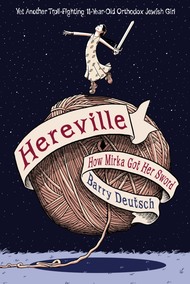 Hereville: how Mirka got her sword by Barry Deutsch
Amulet Books, 2010 Mirka wants to be a dragonslayer, but that profession doesn't exactly jive with her Orthodox Jewish upbringing. One day on her way to school, Mirka comes across a spectacular building with a woman floating in the front yard. When she tells her sisters and brother, they don't believe her so she finds the building again and picks a giant grape. Although the grape doesn't bite her, the giant pig who now follows her around might! How can she possibly get rid of it? This graphic novel is a whole lot of fun, and I really appreciated how her religion and lifestyle played a large yet not oppressive role. Mirka's Yiddish sayings are defined at the bottom of the page, her family's beliefs are shown and explained clearly, and the conflict between her dream to be a dragonslayer and her family's beliefs was made evident. In fact, the tagline on the cover of the book really captures the sentiment throughout: "Yet another troll-fighting 11-year-old Orthodox Jewish girl." What's not to love about that? The drawings themselves are line drawings with black ink, greys, and apart from the night-time scenes in grey-blues, the only colours are beige and an orange shade. I enjoyed Deutsch's style, which is fairly simple but with lots of expression and movement. There is a wide variety of panel layouts throughout, but they would be easy to follow and understand for even those who are new to graphic novels. I particularly adored how he drew the troll, and appreciated the back matter in which Deutsch showed how many iterations of the troll he went through before deciding on the final design. Hereville should hold great appeal for upper elementary or middle grade students who like fantasy, or fans of graphic novels with strong female protagonists like Rapunzel's Revenge. 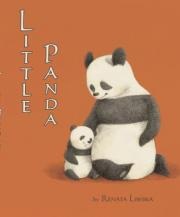 Little Panda by Renata Liwska
Houghton Mifflin, 2008 One day, a little panda is talking to his grandfather when his grandfather tells him the story of a small panda who encounters a tiger one day while he is napping in his favourite tree. This is a cute little story, and the illustrations reflect that cuteness with the animals round and softly drawn. Even the tiger - the villain of the piece - is adorable, which made me wonder if the tiger was even supposed to be full grown. Ultimately it doesn't matter but I thought the tiger might be even a bit scary rather than cute. That said, this is a book for the very young so perhaps a scary tiger wouldn't have been the wisest decision. A sweet story with a couple of humourous twists at the end. 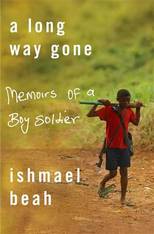 A long way gone: memoirs of a boy soldier by Ishmael Beah
Douglas & McIntyre, 2007 Ishmael Beah was 12 when a rebel army invaded his village in Sierra Leone. He spent many months running and trying to stay ahead of the rebels who were ruthlessly destroying and killing everything in their path. Since many of the rebel soldiers were young boys, Ishmael and his companions were met with fear almost everywhere they went, and as a result had to survive on their own for months on end. Less than a year after leaving his village on the run, Ishmael was picked up by the government army and pressed into service. Learning to eat an entire meal in under a minute was perhaps the least violent skill he learned at the camp, and fighting battles and invading villages under the influence of drugs soon became a way of life. A long way gone is a terrible, moving, and ultimately heartwarming tale of one boy's life as a child running from the rebels and fighting them in battle and, later, being rehabilitated. A long way gone opens masterfully, with a brief anecdote about Ishmael Beah's U.S. high school classmates thinking it was cool how he had seen "people running around with guns and shooting each other." I've heard a similar sentiment expressed many times in the libraries I work in, especially from boys who are the same age as Beah was when he was running and fighting for his life. It is a testament to Beah that he could smile at his classmates' ignorance. In fact, the whole book is a testament to Beah, although he does not glorify himself nor try to make himself appear any different from other boy soldiers: as a squad leader in the army, he commanded other boys and performed horrific acts himself and was certainly an active participant. He seems to attribute his rehabilitation as much to luck as anything else, and describes his painful recovery in frank terms. He objectively describes his fear, frustration, annoyance, anger, and joy throughout. While the book is not gratuitously violent, there are definitely some graphic descriptions of village invasions, battles, and merciless revenge. It is my view that it is as tastefully done as was possible and I was always aware that for every horror described in the book, Beah likely experienced hundreds more. Yes, this is a bleak book, but it is also a tale of the possibility of recovery for children who have lived through horrors that many of us cannot even imagine. 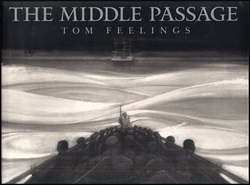 The Middle Passage: White Ships | Black Cargoby Tom Feelings
Dial Books, 1995 Twenty years in the making, The Middle Passage wordlessly depicts the horrifying journey across the Atlantic that millions of African captives were forced to take during the slave trade. I was first introduced to The Middle Passage during a young adult literature class I took during the course of my MLIS, and it hasn't left my mind since. Not an easy book to procure, I luckily found a copy on a used book website and purchased it for the high school library I manage, and I view it as a highly prized part of the collection. The Middle Passage is not an easy book to experience. I say 'experience' because while wordless, it is immensely powerful and often difficult to view. In fact, the horror that Feelings portrays throughout dozens of black and white paintings cannot possibly be put into words. Scenes of violence, abuse, rape, murder, and death abound, yet while Feelings' artistry reveals enough to make clear what is happening in the paintings, the images are not graphic in the sense that some violence in films and books are graphic. What is shown is enough to clearly indicate what is happening and the blanks are easily, uncomfortably, filled in. There is a lot to absorb in The Middle Passage. The white men who abduct the African captives are so pale as to be ghostly. Scenes of the ship's hold, with hundreds of shackled men, women, and children crammed into tiny spaces where many fall ill and perish, are unimaginable. The spirit of the slaves emerges strongly, with rage and mutinous intentions made clear. It is difficult to adequately describe The Middle Passage. It is a book that proves that not only is a picture worth a thousand words, but worth more than words can say. 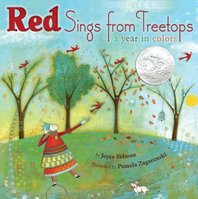 Red sings from treetops: a year in colors by Joyce Sidman, illustrated by Pamela Zagarenski
Houghton Mifflin, 2009 As a rule, I am not a lover of poetry. The only book of poetry I remember enjoying as a child is Shel Silverstein's Where the sidewalk ends due to its wit, creativity, and occasional weirdness, which fails to explain why I attempted to slog through Sir Walter Scott's epic The Lady of the Lake a few years later. In between, my grade 9 English teacher's apparent obsession with The cremation of Sam McGee by Robert Service drove me batty - there is something about the rhythm and rhyme that I didn't like - and I haven't read that blasted poem since. The thing is, if there were poetry books like Red sings from treetops when I was young, I would probably not be so averse to the genre. Sidman essentially weaves a tale of the colours of the seasons in a narrative told in verse. There is a sequential nature to the poems as later poems tie back to earlier ones: poems about white all describe it as a sound, and poems about green follow its prevalence throughout the seasons. This flow of the poems ties in nicely with the flow of the seasons and as a group as well as individually, the poems are lovely. There is no set rhyming scheme, length, or rhythm, so the poems vary but none are more than 10-12 lines. Zagarenski's illustrations are stunning. They are a combination of mixed media paintings on wood and computer illustration, and are magical. All the people and animals who make their way through the seasons wear crowns, even the snowman. I find it difficult to describe Zagarenski's style here, as she combines patterns and textures and pasted newsprint in a way I have never seen before. It certainly lends an air of fantasy to the poems, and I am curious if she uses the same techniques in other books. Lovely to read and beautiful to look at. 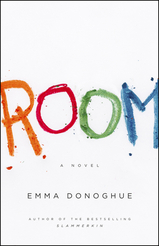 Room by Emma Donoghue
Little, Brown and Company, 2010 The winner of a 2011 Alex Award as a book written for adults that has appeal for teens, Room is certainly not for the faint of heart. Jack has just turned five. He and his Ma live in Room, a fortified soundproofed outbuilding where his mother has been kept prisoner for seven years by Old Nick. Although Old Nick is Jack's father, Jack has never laid eyes on him as he visits only at night after Jack has gone to sleep in the wardrobe. Things take a turn for the worse shortly after Jack's birthday and Ma begins to make plans for escape, involving a reluctant Jack who can hardly get his head around the fact that a world exists outside Room, where he is happy and content. Room is told entirely through Jack's eyes, which makes for a fascinating perspective on both the situation he is in and how his mother reacts. As he doesn't know anything different, to him Room is as good as it gets. His perception of television is that it is transmitted from other worlds, and he truly believes that Dora the Explorer is his friend. Despite his naivete Jack is intelligent and is skilled at language. It is actually quite astonishing how diligent Ma has been in trying to keep him physically and mentally healthy in Room. Ma was young when she was kidnapped by Old Nick, and after seven years of captivity she is still only in her mid-twenties. She finally reaches her breaking point when Old Nick shuts off their power and heat for a few days and begins planning their escape. Jack trying to get his head around the outside world is an interesting process, and certainly Donoghue had her work cut out for her narrating from a five-year-old's perspective. There isn't much action in this novel, but what action there is I found extremely suspenseful. Room is far more about character and what people do to survive trauma, and seeing Ma struggle with newfound freedom and Jack trying to make some sense of the world outside Room - as well as the fact that he may sometimes be farther than a few feet away from Ma - was poignant. I believe that older teens will find much to capture their attention here, especially as Ma was a teen when she was kidnapped. Certainly not a light read, it will undoubtedly continue to engender discussion. 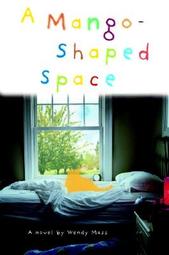 A Mango-shaped space by Wendy Mass
Little, Brown, 2005 For her entire life, 13-year-old Mia has seen colours and shapes that nobody else can. For Mia, every noise, letter, and number has a specific colour and shape. In fact, she didn't name her cat Mango because of his orange eyes, but because his purr is the same orange colour as the flesh of a mango. It sounds like magic, but ever since the day in third grade when she wrote numbers on the blackboard in their correct colours and was called a freak by classmates, she has kept this a secret and tried her best to be "normal." When she starts failing her algebra and Spanish classes because the colours she sees make it difficult for her to understand, Mia tells her family. After seeing a doctor and a psychotherapist, Mia finally meets someone who can tell her what she needs to know: that she has something called synesthesia and she's not the only one. This opens a whole new world to Mia, but unfortunately there are prices to pay. My initial impression of A Mango-shaped space was that Mia's voice was too old for someone who is 13. While I felt that Wendy Mass's descriptions of the colours and shapes Mia sees were very effective and put me inside her head, the occasional phrase in the first couple of chapters would take me out of the story. I just couldn't imagine Mia actually saying of her older sister "[she] dropped me like a bag of piping-hot microwave popcorn" (p. 7). Fortunately, this impression only applied to the early, more descriptive chapters and soon I was swept up in Mia's experience. This is essentially a coming-of-age book that addresses friendship, a first kiss, family relationships, and grief. However, it is framed within Mia's discovery of synesthesia and figuring out how to deal with it and people's reactions to it and the fact that she kept it a secret for so long. It was remarkable how Wendy Mass described Mia's experience of synesthesia throughout the book, and it certainly increased my understanding of a rare and not often spoken-of human condition. 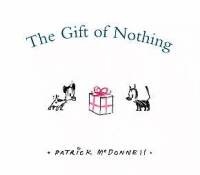 The gift of nothing by Patrick McDonnell
Little, Brown, 2005 Mooch the cat has decided to give a gift to his best friend, Earl the dog. However, Earl already has everything a dog could possibly want so Mooch decides to give him nothing. Problem is, Mooch can't seem to locate nothing since everywhere he looks, there is something. Will Mooch find it? I don't recall reading any of McDonnell's Mooch comics, although I'm sure I must have at some point. Either way, I was not familiar with the characters, nor does one need to be to appreciate this book and its message of friendship and simplicity. It is not an in-your-face message, just that companionship and love are things to cherish over material objects, and it certainly hit home with me. The illustrations are line drawings in black ink with red accents, yet McDonnell captures expression and emotion with little decoration. The quality of the paper is important as well, and since it is recycled paper it has a greyish hue with tiny flecks of darker colour in it. It is also nice and thick and doesn't stick together like shiny paper can tend to do. The fact that the text appears only at the top of and is, at most, 2 lines per page allows the illustrations to convey humour and affection as needed. While there is a definite message that The gift of nothing is getting across, it is one that is worthwhile told with artistry, humour and grace. 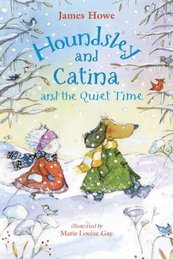 Houndsley and Catina and the quiet time by James Howe, illustrated by Marie-Louise Gay
Candlewick, 2008 Houndsley and Catina are practicing for their band concert that evening when Houndsley looks out the window and declares that they are snowed in. Catina begins to panic, thinking of all the preparations she was going to do for the concert, but Houndsley is relaxed and convinces Catina to stay and spend the day together and enjoy the quiet that the snow brings. As far as I'm concerned, this book depicts the ideal snow day: poems, board games, music, playing in the snow, a roaring fire, and good friends. James Howe certainly captures all that is good with snow days, and the counterpoint of Catina fretting about all the plans that need to be cancelled is a point well taken, especially as she wants to spend more time with Houndsley on their imaginary island in the end. The watercolour and pencil illustrations by Marie-Louise Gay suit the text and theme exquisitely. Soft blues, greens, and oranges reinforce the calm atmosphere at Houndsley's house, and his furniture looks terribly comfortable. I also covet Catina's skirt, for the record - why on earth does she think she needs to change? The inclusion of music and how it can have moods and suit a particular atmosphere is truly lovely. Howe's description of the concert is evocative and makes me wish I was there to hear it: "the musicians picked up their instruments began to play so softly that the notes fell on the listening ears like snowflakes on waiting tongues, gently, softly, there for a flicker before melting away" (p. 36). I know exactly what he means. I had Houndsley and Catina and the quiet time in my display of books about winter as it captures the essence of a snowy day: quiet, beautiful, and well worth sharing. |
| The Reading List |
|
 RSS Feed
RSS Feed